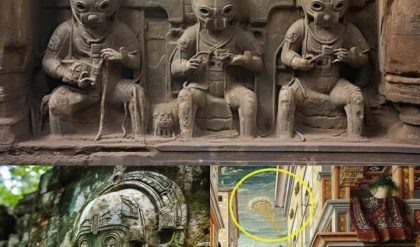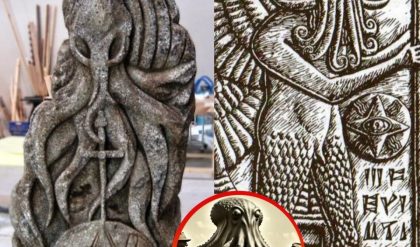The pyramids of Egypt, particularly the Great Pyramid of Giza, have long fascinated scholars, archaeologists, and the public alike. Their sheer size, precision, and the mysteries surrounding their construction have led to numerous theories about their origins. Among these, one of the most persistent is the idea that extraterrestrial beings played a role in their construction. However, a closer examination of historical evidence, archaeological findings, and the capabilities of ancient Egyptian society reveals that the pyramids are a testament to human ingenuity, not alien intervention.

The Origins of the Alien Theory
The alien theory gained popularity in the mid-20th century, largely due to the rise of pseudoscientific literature and media that speculated about ancient astronauts. Proponents of this theory argued that the advanced engineering and astronomical alignment of the pyramids were beyond the capabilities of ancient humans. They suggested that the pyramids’ construction required technologies or knowledge that could only have come from extraterrestrial sources.
However, this theory often overlooks the historical context and underestimates the abilities of the ancient Egyptians. It also tends to ignore the substantial archaeological evidence that supports the human origins of the pyramids.
Human Engineering: The True Architects of the Pyramids
The construction of the pyramids was a monumental task, but it was not beyond the capabilities of the ancient Egyptians. The Great Pyramid of Giza, for example, was built during the Fourth Dynasty of the Old Kingdom, around 4,500 years ago, under the reign of Pharaoh Khufu. This project required meticulous planning, a large workforce, and sophisticated engineering techniques that were well within the reach of the Egyptians at the time.

Labor Force and Organization: The construction of the pyramids involved a massive workforce, including skilled laborers, engineers, architects, and a large support staff. Contrary to popular belief, these workers were not slaves but rather paid laborers, many of whom were conscripted during the agricultural off-season. Archaeological evidence, such as the discovery of workers’ villages near the pyramids, supports this understanding of a highly organized and motivated workforce.
Construction Techniques: The techniques used to construct the pyramids were advanced for their time but did not require extraterrestrial intervention. The Egyptians employed simple yet effective tools and methods, such as copper chisels, wooden sledges, and ramps. Recent studies suggest that water may have been used to lubricate the sand, reducing friction and making it easier to transport massive stone blocks. Additionally, the use of a straight or zigzagging ramp system allowed workers to haul these blocks to great heights.
Mathematical and Astronomical Knowledge: The precise alignment of the pyramids with cardinal points and certain celestial bodies is often cited as evidence of alien involvement. However, the ancient Egyptians possessed extensive knowledge of astronomy and mathematics. They used this knowledge to align the pyramids with remarkable accuracy, demonstrating their understanding of the cosmos without the need for extraterrestrial assistance.
Archaeological Evidence Against the Alien Theory
Archaeological discoveries over the past century have provided a wealth of evidence that supports the human construction of the pyramids. This includes not only the remains of the workers’ villages but also the tools they used, the quarry sites where stones were cut, and the detailed records left behind by the Egyptians themselves.
Hieroglyphic Records: Ancient Egyptian inscriptions and hieroglyphs detail the construction process, the workforce involved, and the religious and political significance of the pyramids. These records make no mention of extraterrestrial beings; instead, they attribute the construction to the will of the pharaohs and the skill of their people.
Material Evidence: The tools and techniques used in pyramid construction have been well-documented through archaeological excavations. These findings show that the Egyptians had developed sophisticated methods for quarrying, transporting, and assembling the massive stone blocks that make up the pyramids.
Cultural Context: The pyramids were built as tombs for the pharaohs, reflecting the Egyptians’ religious beliefs in the afterlife. The design and construction of the pyramids were deeply intertwined with the culture, religion, and politics of ancient Egypt, further supporting the idea that they were a human achievement.
Conclusion: Celebrating Human Achievement
The pyramids of Egypt are not only architectural marvels but also symbols of the ingenuity, determination, and resourcefulness of the ancient Egyptians. While the alien theory has captured the imagination of many, it ultimately detracts from the real achievements of one of history’s greatest civilizations. By debunking the myth of extraterrestrial involvement, we can better appreciate the true legacy of the pyramids as a testament to human creativity and engineering prowess.
The story of the pyramids is one of human innovation, a narrative that celebrates our ancestors’ ability to solve complex problems and achieve greatness through their own efforts. In understanding this, we honor the remarkable civilization that built these wonders of the ancient world.





